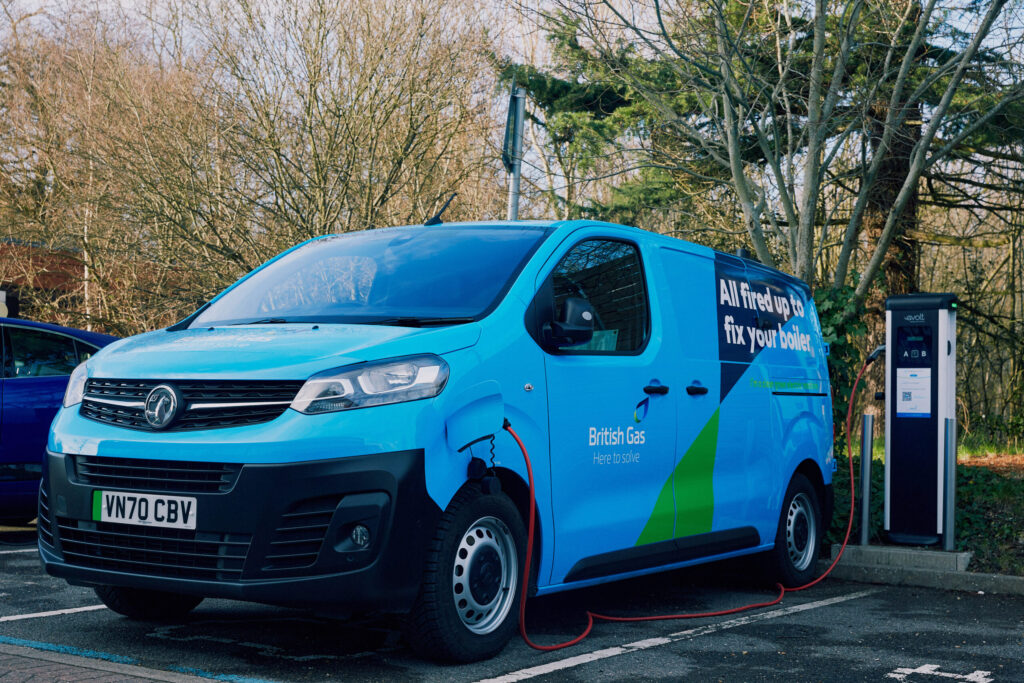
In order to face the challenges of the residential energy market head on, Centrica embraced a bold new technological approach to rejuvenate its British Gas business. The architects of the New Energy Platform share their story, and reveal how this industry giant went back to the drawing board to create a nimbler, digital-first service for its customer.
Centrica’s leaders are accustomed to thinking big. British Gas – Centrica’s energy supply business – is the largest of the UK’s “Big Six” energy companies, providing gas, electricity and services to millions of residential customers up and down the country.
But to fix an emerging problem, three years ago Centrica’s core technology team for residential energy decided to start small. Even though it was the established market leader, British Gas was slowly but steadily losing customers to a new generation of digital-first energy suppliers. The systems which supported British Gas’s residential energy business in 2018 were outdated, affecting its ability to respond to user needs. It was time to take action.
“We thought ‘we’ve really got to do something quite radical or the energy part of our business is in deep trouble’,” says Kerrie Lacey, Head of Design and Delivery for what Centrica calls its “New Energy Platform”, or NEP. “There was a small group of individuals who sought to think outside of the box, and with a number of suppliers, said ‘how about we try something really different?’ Technically, and from a working and cultural perspective.”
The team adopted a “startup” mindset from the beginning of a brand new platform implementation. Alongside technology partners including ENSEK and Salesforce, Centrica started plotting out what the NEP might look like. In just 12 weeks, it built a “demonstrator” to put in front of Centrica’s board – this was approved, and the project began in earnest.
Technologically, Centrica’s approach has been to deploy best-in-class, off-the-shelf cloud solutions, at the same time as investing heavily in its own team of engineers to build the systems which can deliver the most value directly to customers. Andrew Thompson, Head of Core Platform, explains more.
“I think of our architecture as having four different layers,” he says. “We have our customer channels – such as our customer portal, web chat, voice – and we have invested heavily in deep engineering in that space. Then we have our customer-centric layer, which is where Salesforce sits and where it’s all about customer service. Next is our energy fulfilment layer, where ENSEK essentially delivers our utility service. And then the fourth layer is data, and collecting and analysing data from those systems.”
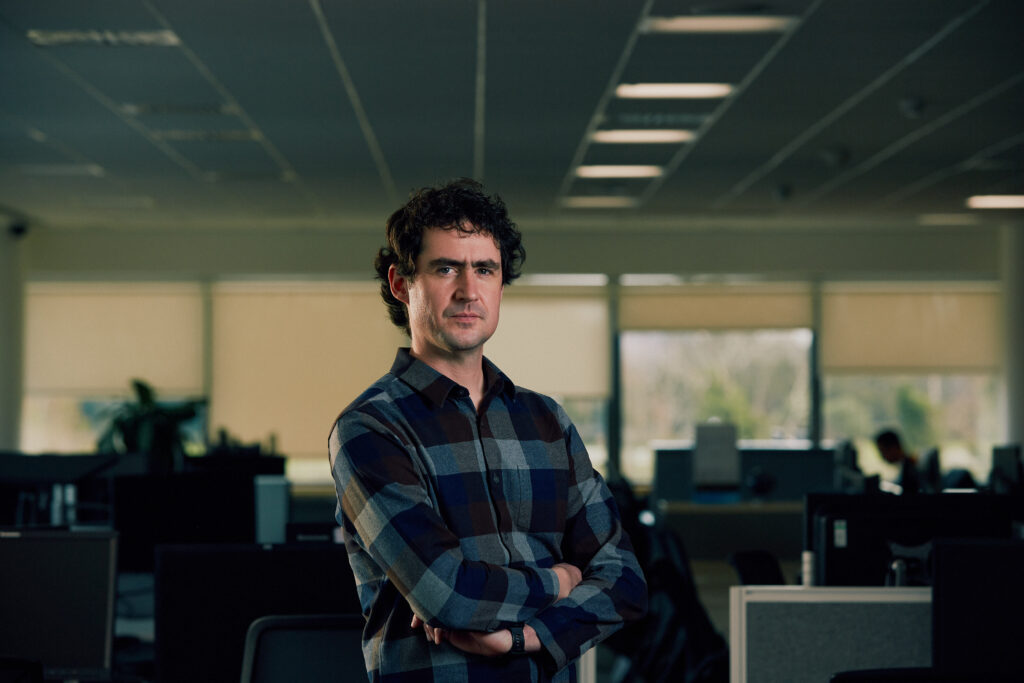
Only three months after NEP was demoed to the board, Centrica acquired its first residential energy customer through the platform. Lacey, who had been leading a small project cluster in Centrica’s Leicester office, described this moment as “absolutely momentous”. But then came the much more complicated part – the scaling of its technology and teams, and taking the first steps towards migrating millions of users from the existing platform.
“We entered into a new phase which was proving that this productionised stack could scale and potentially be the home for all of our seven million customers,” says Lacey. “It certainly started to get a bit serious, because there was a lot more interest in BGX [the original name Centrica had given to the platform]. We gave ourselves more of an identity at that point. And we became what we call the New Energy Platform.”
Richard Morgan, as Technology Director, has been Centrica’s main sponsor for the NEP. Morgan has spent all of his career at the organisation – coming up to 25 years – but believes this is one of the most exciting transformation programmes he has been involved in.
“There are two things I see as different,” he says. “The first is the technology we use makes it easy for us to focus on the things that add real value, like designing great customer experiences, and not have to worry about the underlying infrastructure that we have historically spent a lot of time working on. I think the other thing that’s great here is that this is a brilliant example of a single team working on something.”
Lacey admits that there has been some growing pains as that team has scaled. Centrica has built distributed squads to oversee specific technical changes – it now has 13 such squads – and individuals have been recruited as much for cultural fit as for their skills. The team has steered clear of a hierarchical structure, with each squad empowered to make its own decisions.
The thinking behind this has been to preserve the agility of the team as it has had to scale. It’s a structure that has also allowed Lacey and the leadership group to retain visibility on all aspects of the project as its scope has expanded.
“We were really lucky because when you’re starting from scratch, you can pick any change methodology you like. We chose agile,” she says. “Having a distributed number of squads is just great, because they are like little autonomous groups on their own.
“Without the people, this is nothing, what we’re trying to do is impossible to do. And when everybody shares the same vision, which is the customer – they are the most important thing in all of this – then you can really achieve something amazing.”
Customer-centricity has underpinned Centrica’s plans from the very beginning. Competition in the industry has grown intensely over recent years; in September 2021 there were 44 active suppliers competing for residential energy customers according to Ofgem, though there has been some consolidation since given market conditions over the last 12 months. Regardless, British Gas has been redesigning its offering with user experience at the core in order to attract and retain customers.
Technologies and approaches have been chosen based on how well they can deliver measurement and feedback on customer activity. The team now has a wealth of insights on how users are interacting with the platform and how the platform itself is operating.
“Our technology really underpins that, and enables us to do that in a way we could never have done before,” says Thompson. “For me, the most exciting part is seeing the feedback from the customers and having that real-time operational insight. I get a real thrill out of seeing people use things for real. It’s not just a design on a page – we have real people interacting with our real systems.
For me, the most exciting part is seeing the feedback from the customers and having that real-time operational insight. I get a real thrill out of seeing people use things for real
A fresh approach to data has made these outcomes possible for British Gas. The company has plugged multiple historic data sources into a single data lake, meaning the data can be used to inform the technology team as it continues to grow out the New Energy Platform.
Emma Kissock, Head of Data Platforms, has led the mission to democratise data during the scaling of NEP. This has involved the launch of new tools for data visualisation and cataloguing, and giving accessibility to data science and analytics teams working right at the cutting edge.
“It’s very rare that you get an opportunity in a business like Centrica, which is so big, to start again,” says Kissock. “I’ve got a really great team around me, and we can just test-and-learn different things, according to the customers’ needs. We want to put customers at the centre of everything that we do and that’s particularly important in data.
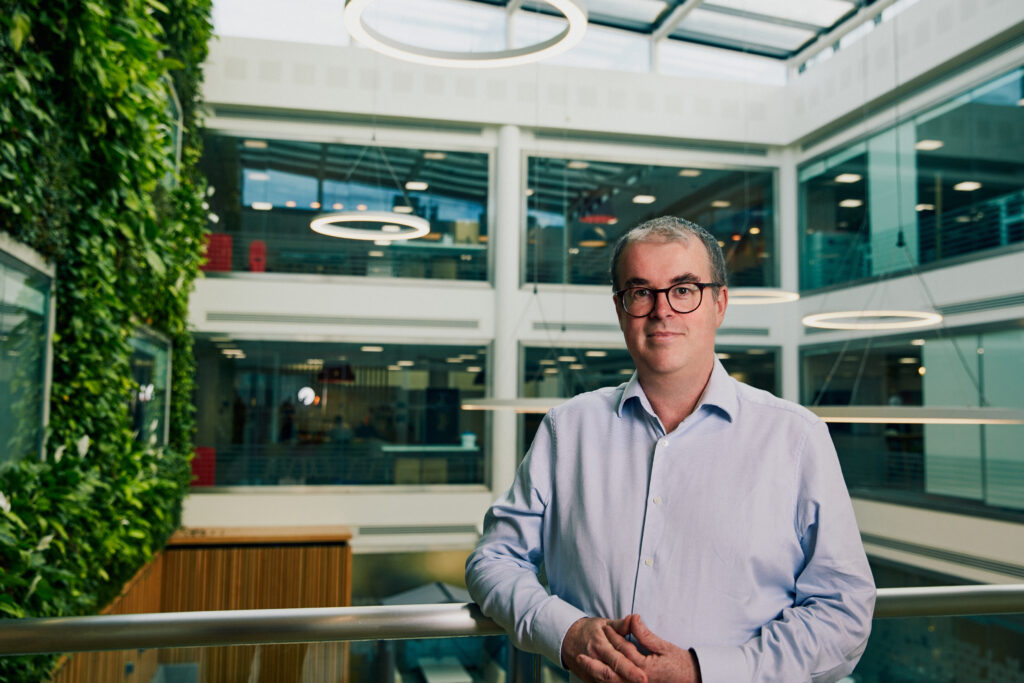
“There really wasn’t any concept of data being available for the whole organisation before. We just wanted a place to centralise it – so bringing all of our data sources in, Salesforce data, ENSEK data, all stored in one place. I think it’s so important that we’ve got a data lake which works for everybody.”
Salesforce and ENSEK have been critical partners to Centrica throughout the journey. They each formed a part of the cross-functional team at the concept stage and have adapted their industry-leading solutions to meet Centrica’s requirements for the NEP.
In the case of Salesforce, Centrica has tapped into many components of its Customer 360 offering including its specific cloud for energy and utilities, its Marketing Cloud, Tableau CRM, and MuleSoft to connect different systems, applications and data sources. The partnership has enabled Centrica to understand its NEP customers faster and in more detail.
“Salesforce has been really critical in that digital-first journey for us, it has been a real accelerator,” says Thompson. “Salesforce, to me, always comes across as less of a team and more like a philosophy and a lifestyle. It has a very strong culture which it’s bringing to us. And it’s really proved itself throughout the journey that we’re taking – it continues to bring out new products, it continues to be best-in-class.”
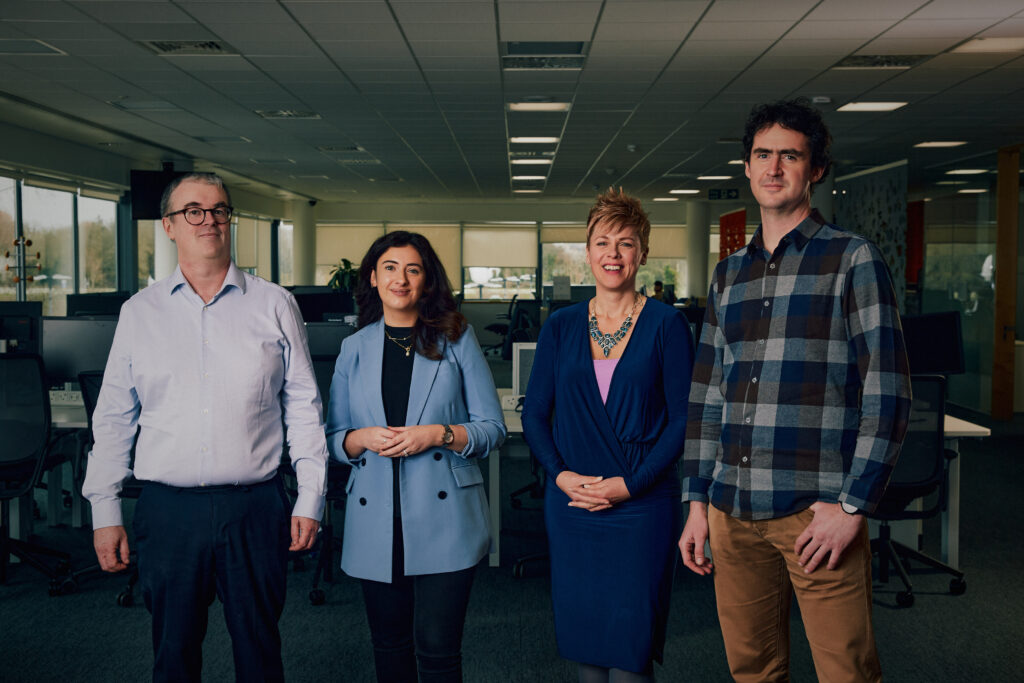
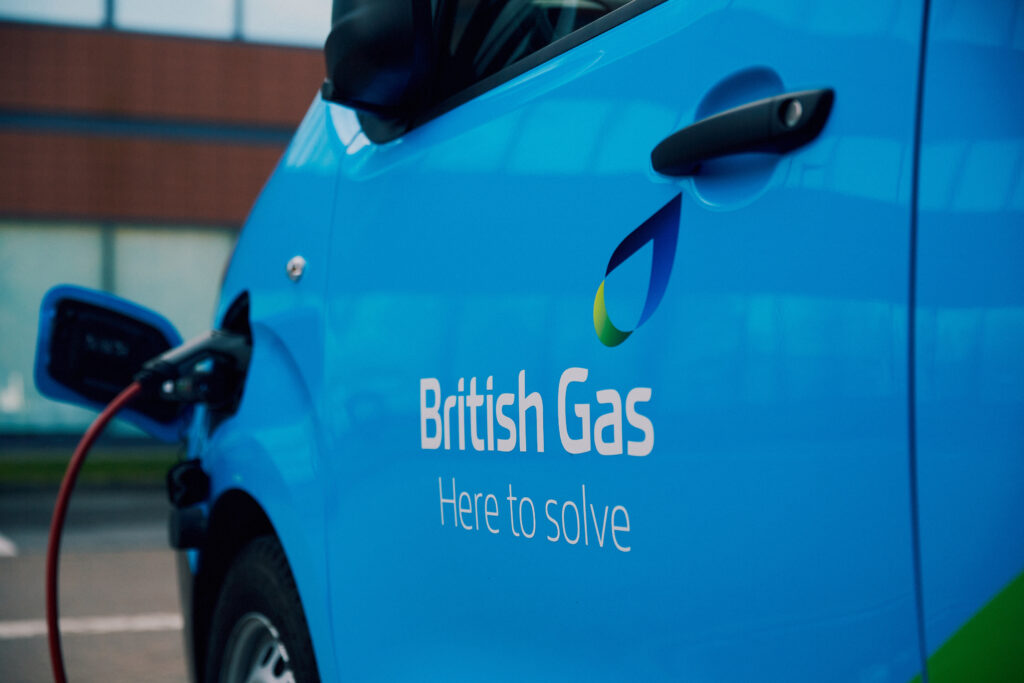
ENSEK provides its SaaS platform enabling British Gas to quote, sign-up, bill, collect and service in real time. Built in the cloud, the platform delivers flexibility, resilience and scalability for energy companies in an increasingly-digital and highly-regulated environment. The two companies solidified their long-standing collaboration by agreeing an enhanced strategic partnership for the NEP in August last year.
“ENSEK has some wonderful individuals who are hugely talented in the technology space,” says Lacey. “This means its technology is always going to be leading-edge, which is one of the things that really attracted us to the platform.
“What I love about the relationship with ENSEK is that it’s very open. I’m happy to be challenged and I can have a similar conversation with them. I think that shows the maturity of the relationship, that we can have those open conversations and nobody gets upset. We’re all driving for the same thing, which is to migrate these seven million customers.”
The scale of the migration is unprecedented in the UK’s energy industry. At the time of writing, Centrica had moved approximately 200,000 of its customers onto the platform. Its technology leadership team spent the early part of 2022 mapping out its plan to accelerate and complete the migration, and the continual addition of new capabilities will support that process.
Morgan admits the team feels a great sense of responsibility to provide a digital service which delivers affordable renewable energy and a simplified experience for its customers.
“We’re implementing a solution for such an important service for so many customers in the UK,” he says. “I think the last few months have highlighted to us all just how important energy supply is to everybody, and we’re very, very aware of the challenges around energy prices right now.
Bigger picture
“As well as scale, I think some of the complexity of what we do is really interesting. Our ability to deal with that number of customers and our ability to deal with the amount of contact you get from that is really going to prove the effectiveness of these technology solutions.”
The bigger picture for Centrica, Salesforce and ENSEK is supporting customers amidst a shift in the very fundamentals of the energy industry. The transition to net-zero, electrification and the roll out of electric vehicles, and the growth of the smart home are just some of the transformational changes directing organisations in the sector.
Morgan sees the team’s investment as an investment in the future of Centrica and the UK’s energy infrastructure.
It’s very rare that you get an opportunity in a business like Centrica, which is so big, to start again
“I think our ability to help the country move to net-zero is right now constrained by the fact that our existing systems are complicated,” he says. “By having the NEP, we can implement really interesting tariffs, interesting ways for customers to engage with their energy, and we can be better able to implement products that will encourage customers to micro-generate and for that micro-generation, if necessary, to be brought back into the grid.
“That makes a big difference, I think, for the whole country. What this programme does is it gives us the ability to develop in that area at the speed that we’re going to need to develop.”


